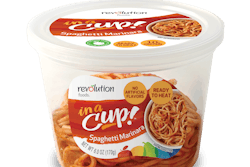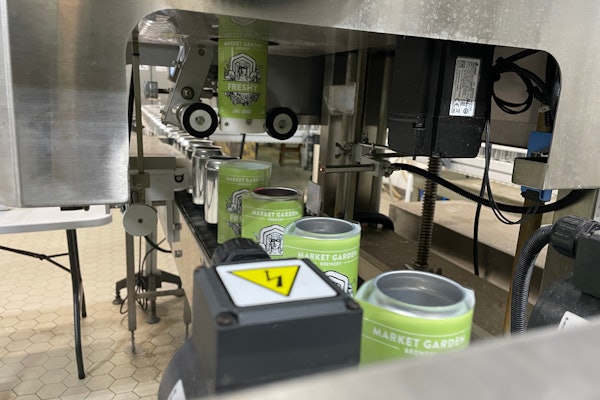To understand the role of intermediate bulk containers (IBCs) is to understand the name itself: containers, in that they hold contents; bulk, in that the contents are of large, undivided quantities; and intermediate, in that the containers hold quantities that are smaller than those of tank cars but larger than those of industrial drums, pails, and totes. IBCs are used for liquids and particulates (i.e. powders, granulates, resins), products that later will undergo filling into smaller packaging or will be an ingredient or component in a production or manufacturing process.
Within such industries as food & beverage, pharmaceuticals, cosmetics, and household chemicals, packaging professionals devote themselves to the design and development of packaging, the receipt of packaging, the filling of packaging, and the shipping of packaged products. How the inputs to production come packaged──whether in IBCs or other industrial containers──might be regarded as the province of corporate purchasing agents or of someone at the production facility. Such thinking, however, undermines the opportunity for packaging professionals to contribute outside their traditional spheres of influence.
IBCs reduce costs and increase efficiencies in material handling, transportation, and warehousing, under certain scenarios, such as a company that receives contents in 55-gallon drums. A switch to IBCs that hold the equivalent of multiple drums means fewer handlings and better utilization of cube during transportation and storage. Safety also benefits due to fewer encounters between personnel and containers. Even if a company already utilizes IBCs, it might not be utilizing the variety best suited to its needs.
Rigid intermediate bulk containers (RIBCs)
A popular type of RIBC is a composite, consisting of a durable plastic (i.e. HDPE) container (commonly known as a bottle) housed within a metal cage and mounted on a pallet. The result is a structure designed for handling by forklift or pallet jack. This type of RIBC can be of one-time usage; however, the more favorable economics attach to the multiple-use variety, which can be collapsed for purposes of returns.
Another popular type is the metal tank, made of stainless steel. Unquestionably durable, they are used for all types of liquids, even flammables.
RIBCs, whether composite or stainless steel, dispense through ports, typically located at the base, and hoses or pipes that attach to the ports; thus, RIBCs lend themselves to contents that flow, liquids, for sure, but also granulates.
For applications that fall under the purview of the FDA, the materials in direct contact with the contents must have that agency’s approval. And for applications involving hazardous materials, there must be compliance with the multiple agencies that promulgate haz-mat regulations. Then there are fire-codes, to which plastic-component RIBCs are subject, owed to their combustibility.
Flexible intermediate bulk containers (FIBCs)
FIBCs, also known as bulk bags, are constructed of woven polypropylene and are used for dry contents. Since FIBCs are not practical for liquids, direct comparisons and contrasts with RIBCs have their logical limits; nonetheless, there are characteristics of FIBCs that are worth noting.
One of them is that, for a given quantity of contents, FIBCs have the lowest packaging-to-contents ratio of any type of IBC. Loops at the tops of the bags allow for forklift handling, while simultaneously eliminating the need for pallets. The filled bags are stackable and the empties can be folded flat.
FIBCs also find use in the supplier side of packaging, an example being plastics. In high-output facilities, main resins, such as polyethylene or PET, are received in tank cars and stored in silos; however, companion resins, used as tie-layers, barriers, elastomers, etc., are received in FIBCs.
Trending toward customization
The capacity of RIBCs ranges up to 800 gallons and that of FIBCs up to 4,400 pounds (2,200 for hazardous materials); however, users still must contend with deciding on the optimal landing point. Just as imposing are decisions about design features; for example, FIBCs are available with different kinds of tops and bottoms that affect loading and dispensing efficiencies.
IBCs that are designed for durability, long life, and reusability have built-in claims regarding sustainability. Nonetheless, that fact doesn’t prevent dueling claims between RIBCs and FIBCs--by suppliers and by users.
IBCs constitute assets; as such, they impose decisions on suppliers and customers alike regarding acquisition, terms-of-use, and management/accounting.
Acquisition can be for new IBCs or for refurbished ones, the latter further complicated by type and the degree, in that refurbishing entails simple operations such as washing, as well as more complex ones such as repairs. The implied risks are related to the type of contents. Food applications should be more risk-averse; for that matter, so should hazardous materials applications.
Terms-of-use reflect ownership, as reflected in leasing arrangements, for example. Particulars regarding capital outlay, tax benefits, and related considerations invite inputs from those possessing the required expertise.
Management (analogous to pallet pools) involves knowing the location of the inventory, whether in a closed-loop or an open-loop arrangement; after all, IBCs are physical embodiments of an investment.
What should be clear is that there are many complexities attendant to IBCs, especially on the user side. In response, suppliers increasingly are differentiating themselves by offering products and services customized to their customers’ needs. Customization, however, implies a higher price and initially can delay availability and delivery.
On a related front, both halves of the IBC supplier industry are busy establishing standards for quality, efforts spearheaded in large measure by their respective trade associations. Intermediate, by definition, suggests something situated in the middle, and there’s no denying that the IBCs industry is aggressively trying to expand the middle.
____________________________________________________________________
Sterling Anthony, CPP, is a consultant specializing in packaging, marketing, logistics, and human-factors. His contact information: 100 Renaissance Center, Box-176, Detroit, MI 48243; telephone 313-531-1875; [email protected]; www.pkgconsultant.com

























